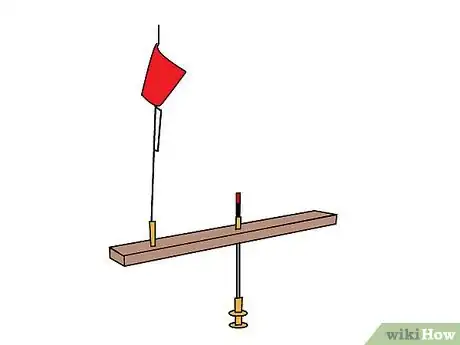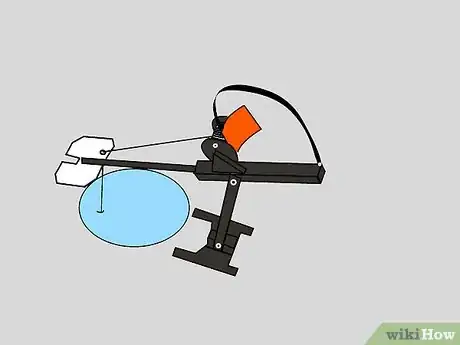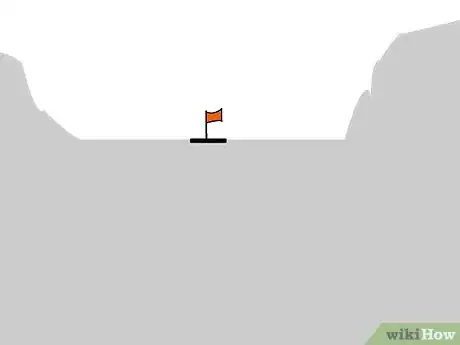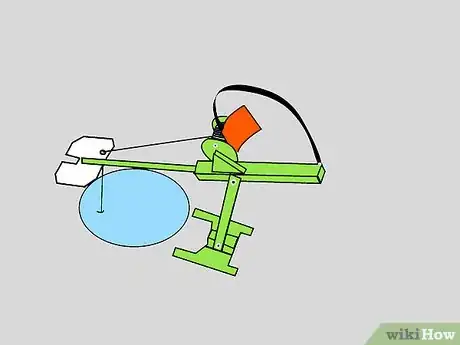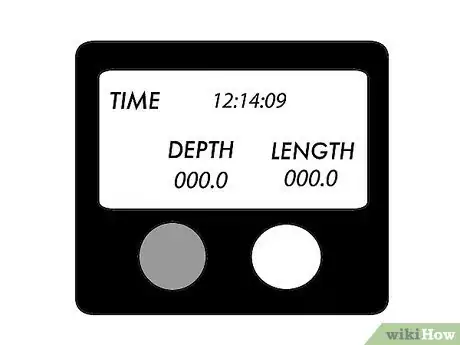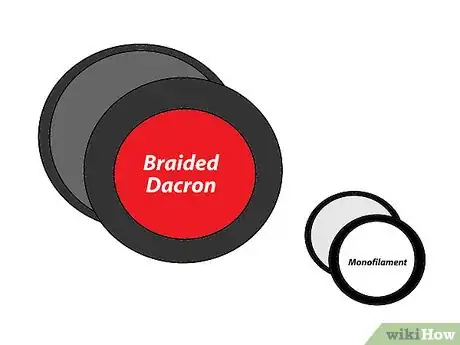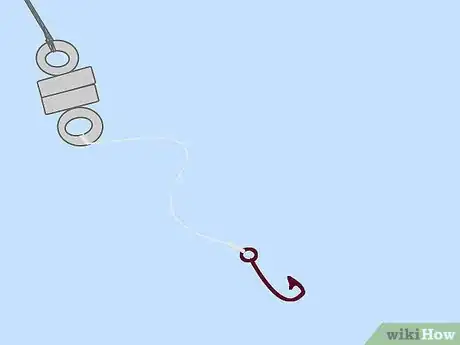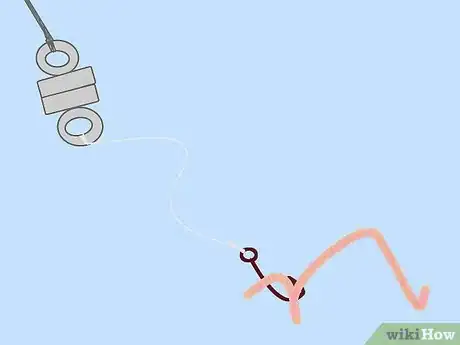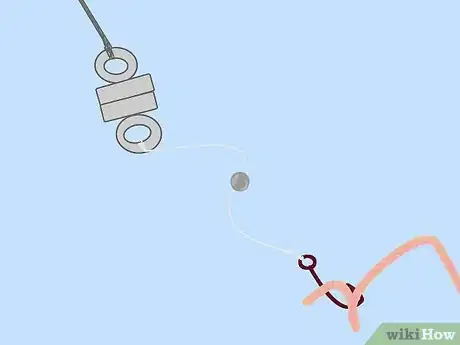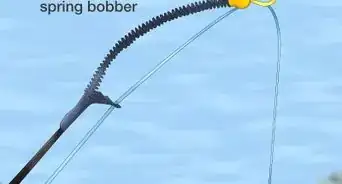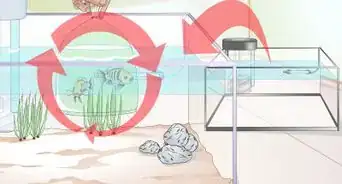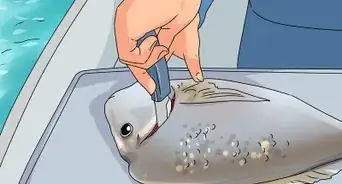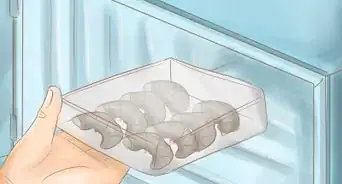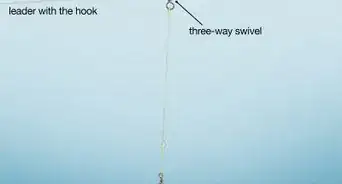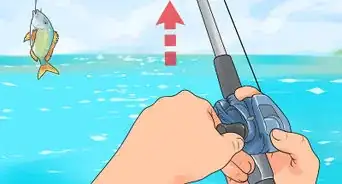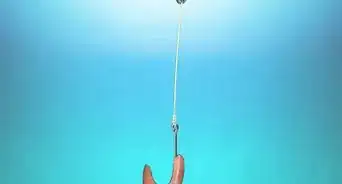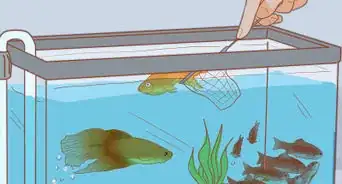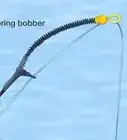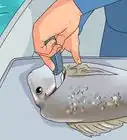wikiHow is a “wiki,” similar to Wikipedia, which means that many of our articles are co-written by multiple authors. To create this article, volunteer authors worked to edit and improve it over time.
This article has been viewed 152,680 times.
Learn more...
Tip-ups are to ice fishing what trot lines are to river bank fishing for catfish, a way to present live bait to fish without holding on to a rod. Tip-ups allow ice fishermen to fish multiple holes at the same time, fish various depths at once, or work various positions on drop-offs or other bottom structures. Tip-ups are rigged with a small flag that pops up when a fish takes the bait, hence their name. Following are steps on how to choose and set up an ice fishing tip-up.
Steps
Choosing a Tip-Up
-
1Choose a durable tip-up. While some tip-ups offer fancy looks and features, you want to look at the materials the tip-up is made of. Although plastics are lighter in weight, they usually do not handle exposure to sunlight and cold weather as well as either wood or metal.
- Most tip-ups are designed so that the line spool is underwater when the tip-up is set up. The water protects the spool and line from freezing in the cold air. Some tip-ups, however, use a windlass design that keeps the line spool and most of the tip-up above the water.
-
2Choose a tip-up you can see from a distance. Your tip-up should have a large enough flag on a long enough pole that you can see it from a distance of 100 yards (91.4 m) (90 m) in most weather conditions. Choose an orange flag over a yellow one, as a yellow flag will appear white as you get further away from it.
- Having the rest of the rig be brightly colored as well can be helpful as well to keep you from accidentally stepping on it as you check all your rigs. If your tip-up isn't brightly colored but is made of wood or metal, you can paint it so you can see it better.
Advertisement -
3Look for helpful features. In addition to their cross pieces, line spool, and flag, some tip-ups offer special features to assist ice fishermen in recognizing when a fish is on the line and helping to keep the hole being fished open.
- Some tip-ups supplement the flag with an "action indicator" that shows the line movement when a fish has taken the bait and is swimming away with it.
- Some tip-ups feature a round cover that fits over the hole being fished to keep it from being exposed to the air and thus freezing over.
Rigging a Tip-Up
-
1Fill the line spool with a braided or Dacron line. While monofilament line is appropriate for the reel on an ice fishing rod, a braided or Dacron line of 30 to 40 pound test (15 to 20 kg class) is a better choice for a tip-up, as you can see it more easily against the snow than a (usually) clear monofilament line. You will need a short length of monofilament �- from at least 6 inches (15 cm) to as much as 3 to 4 feet (0.91 to 1.2 m) (0.9 to 1.2 m) of 8 to 10 pound test (4 to 5 kg class) -- for a leader, but only for that purpose.
- If ice fishing for pike, substitute a braided steel leader for the monofilament.
-
2Attach a swivel to the end of the line. Your monofilament leader is attached to the other end of the swivel.
-
3Attach a hook to the other end of the leader. The size and type of hook depends on the type of fish you're after.
- For bluegill, crappie, perch, or other panfish, use a size 6 or size 8 single hook.
- For walleye, use a size 4 or size 6 single hook.
- For pike, use a size 2/0 to 6/0 single hook or a treble hook. Some hook rigs for pike feature a pair of treble hooks.
-
4Bait your hook with the right live bait for the species you're after. In most cases, you'll use minnows, shad, or suckers; however, grubs, mealworms, or waxworms can be effective for panfish. Pieces of nightcrawlers work well for bluegill, crappie, and perch, while whole nightcrawlers are good bait for catfish or largemouth bass.
-
5Use enough split shot to keep your bait down, but no more. Attach your split shot to the leader, far enough from the bait to sink it, but not enough to impair its swimming ability; about 4 to 5 inches (10 to 12.5 cm) is about the right distance.
- Using split shot with little projections at the end opposite the mouth of the split shot will let you change split shot weights as necessary without having to cut the leader to change the shot.
Community Q&A
-
QuestionHow do I clean fish?
 Community AnswerYou cut from the anal fin up to the back of the head. Then clear out the guts, and the blood sack on the spine. This works best with small fish, like trout and pan fish and it can be messy.
Community AnswerYou cut from the anal fin up to the back of the head. Then clear out the guts, and the blood sack on the spine. This works best with small fish, like trout and pan fish and it can be messy. -
QuestionWhat do you think the best line is to use?
 Community AnswerIf fishing for small fish like trout and small perch, use a 2 - 4 lb mono. But a 10-lb braid can be used to catch any species, like pike, bass, trout, walleye.
Community AnswerIf fishing for small fish like trout and small perch, use a 2 - 4 lb mono. But a 10-lb braid can be used to catch any species, like pike, bass, trout, walleye.
Warnings
- Although drowning is a distinct possibility if you should fall through the ice, the greater danger is hypothermia. Your survival time in the water ranges from 20 to 90 minutes, depending on your size and the amount of clothing you're wearing, although your arms will become too numb to help you extricate yourself after only a few minutes. You can increase your chances of survival by carrying an ice pick, gaff, or long knife to spear the ice near the hole to give yourself leverage to pull yourself out, or failing this, pull your arms and legs into your chest. To rescue someone else who's fallen in, use your ice auger, rod, or tow rope from your ice sled to reach the victim and pull him or her to safety.⧼thumbs_response⧽
- Beware of newly formed ice when ice fishing. Ice should be frozen hard to a depth of at least 3 inches (7.5 cm) before you step out on it and not be covered with a layer of water or snow or have pressure cracks. Ice tends to be thinner at the shoreline, around rock piles or weed beds, near the mouth of an incoming stream, or over a sub-surface spring.⧼thumbs_response⧽
